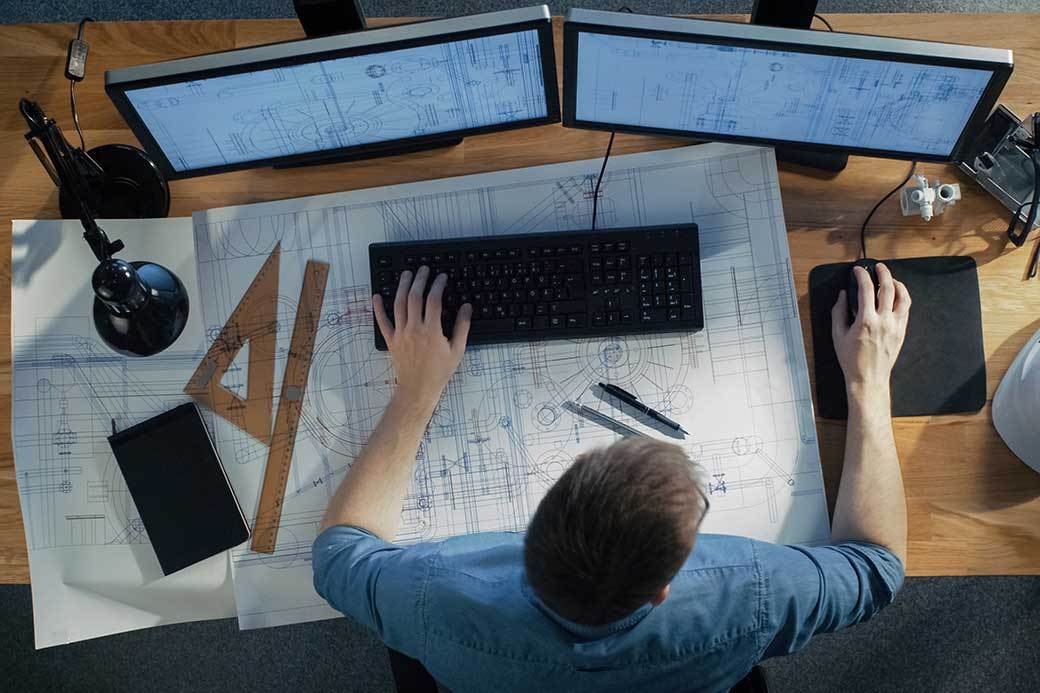While they’ve been steadily losing market share over the years to their more mobile laptop and handheld brethren, desktop computers still have a sizable following. With their larger screens, increased power, and enhanced storage capabilities, desktops are a must for those into gaming, those who work with multimedia, or those just searching for a stable computer system they can set up in their home or office.
You can’t go wrong with a desktop computer from Hewlett-Packard (HP), one of tech’s original giants. However, like the majority of computers, HP computers are expensive, so you should pay close attention to what you’re paying for.
This guide will walk you through the different types of HP desktops, in addition to some of the features and specifications to consider. We’ll also give you an idea of how much you should pay for an HP desktop. For our five favorite HP desktop computers, check out the matrix.

Key considerations
Types of desktop computers
Some desktop computers are all-in-one systems. These computing systems feature a monitor and computer rolled into one unit. They should also ship with a mouse and keyboard to provide you with everything you need to be quickly up and running. All-in-ones feature fewer wires and less clutter than other systems, and they are easier to fit into tight spaces. However, because they are closer to laptops in terms of construction, they can also be limited in terms of expansion options.
Tower systems are the traditional boxy computers you are probably familiar with. They have the space to include more powerful components and are often used for gaming and multimedia tasks like editing video. They do take up more space, may or may not ship with a monitor, and are often more expensive than other desktop types.
Mini systems are small tower systems. Their compact size is a plus where space is an issue, but that size also means they are less powerful and harder to expand. These models are generally best for less intensive, day-to-day computing.
What is bundled with the desktop?
For all-in-one systems, you are set to go. For other desktops, know what you are buying. Does the computer ship with a monitor or will you need to supply one yourself?
All desktop bundles should include peripherals, such as a mouse and keyboard, but know what you are buying. Are they wired or wireless? Is the mouse wheeled or optical? Is the keyboard standard-size and what is the quality like? Make sure you know exactly what is bundled with an HP desktop computer before buying.
Setup
HP computers use the Windows operating system. By design, the majority of Windows computing systems are pretty easy to set up. You simply plug in the computer, attach the wires, and push the power button. With fewer wires, all-in-one systems are even easier to start up right out of the box.
Every HP computer will run you through a setup program, which will provide you with a personalized base to start from. It is then recommended that you run Windows Update so that you will have all the latest patches for your operating system in place before you use your computer.
Features
Monitor
If your HP desktop system doesn’t include a monitor, you are going to need to provide one yourself. Monitors exist in a wide array of sizes and configurations. A larger screen will allow you to work with more windows open at a time. A higher resolution is best for working with video and graphics. Some monitors also offer a touchscreen option, so you can work with the screen much like you would the screen of a tablet or smartphone.
Processor
A faster processor – particularly one with multiple cores – will allow you to smoothly run more programs. This is a big plus for multimedia or if you need to run a variety of programs simultaneously.
Memory
RAM (random access memory) can also affect computing speed. The more RAM you have, the faster your computer will be. On the other hand, low RAM can result in sluggish speeds, particularly if you are running a computing-intensive program or several programs at once.
Hard drive
The hard drive is where your files and programs are stored. The larger it is, the more you can store on your computer. This is a particularly big factor if you do a fair amount with video, photos, or graphics.
Graphics card
If you are into gaming or work with multimedia, you should have a graphics card, and the more advanced, the better. This is particularly important for gaming, which usually does poorly with a computer’s integrated graphics capabilities.
Media drives
Does the HP desktop computer include a DVD-RW or DVD writer? Can you use memory cards like SD, SDHC, or SDXC with it? These drives are important for everything from backing up files to moving them around more easily.
Ports
Ports allow you to expand your computer and plug in everything from your TV to printer to headphones. These vary greatly from computer to computer, but some ports you should look for include:
- USB
- HDMI
- VGA
- 10/100/1000 Ethernet
- Headphone/microphone
- DisplayPort
- Wireless LAN/Bluetooth
Speakers
Does the HP desktop computer you’re considering have internal speakers, and what is their quality like?
